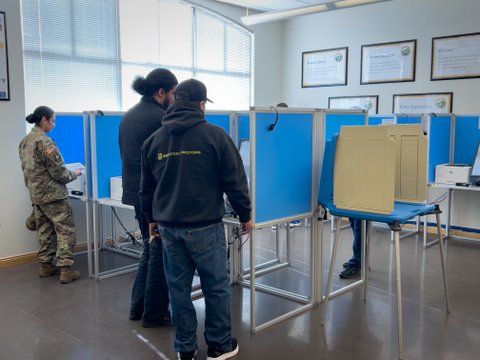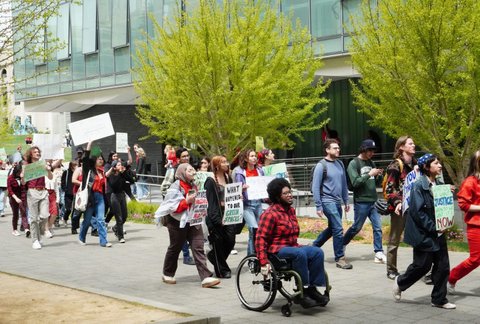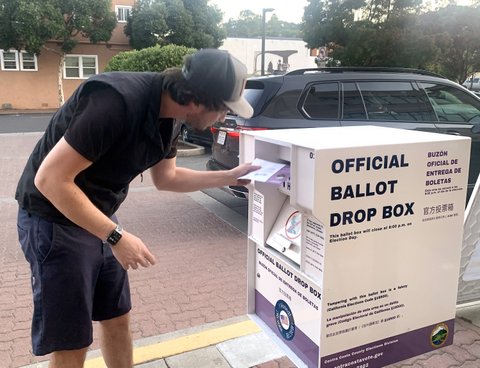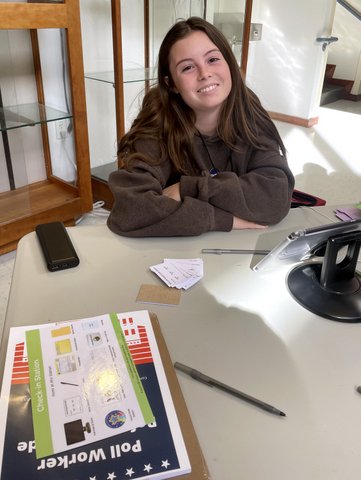
31 Oct The Life of a Ballot After It Leaves the Voter

Early voting has begun at the Contra Costa County elections office in Martinez on Oct. 30. (Ruth Dusseault / Bay City News)
Story, photo and video by Ruth Dusseault
Bay City News
Ballots are being cast around the state between now and Tuesday at 8 p.m. when the polls close on Election Day. What happens to those ballots after they leave the voter’s hand is a multi-step process that county registrars must perform in a secure yet transparent way.
As of Wednesday, the Contra Costa County elections office had received 206,000 vote-by-mail ballots.
“That is actually what we planned for at this point,” said Kristin Connelly, county clerk, recorder and registrar of voters. “We are starting to see a trickle off of the USPS returns and starting to see a pick-up of voters putting their vote by mail ballots in our 43 secure drop boxes.”
Accessible walk-in election polling stations are open at 146 locations in the county in addition to drop boxes. Each box of ballots is tracked with a barcode and brought to a central location for sorting and counting. As soon as they are counted, they will live in a barcoded box, behind a locked cage inside a storage facility for 22 months.
There are several processes, including two machines for sorting and counting.
The sorter takes a picture of the back of the envelope, which has the voter’s signature. Using that image, staff verifies a match with the voter’s signature that appears on their driver’s license or voter registration card.
“We do this 100% with human eyeballs,” said Connelly. “About 97% of our ballots are able to be read by our scanners, but 3 to 4% cannot be read for a variety of reasons. Somebody spilled coffee on their ballot. Somebody decided to write something in. There are a lot of people that may not normally vote, but they’re voting for president, and that’s all they’re voting on.”
>>From Our Archives:
Experts Address Doubts About Election Process<<<
In some obvious cases, election officials will duplicate that ballot on a format that the machine can read. It is given a code that links the duplicate with the original ballot for purposes of storage and tracking, said Connelly.
“The most common reason for someone to have their vote not pass signature verification is that they forget to sign it,” she said. “Right now, of the 206,000 ballots that we’ve received thus far, there’s been about 1,500 letters that have been sent out for either a mismatch or a missing signature.”
When a ballot gets returned to the voter for clarification, that is called “curing” and voters have until Dec. 1 to cure their ballot, Connelly said.
The state of California passed a new law this year. For the first time, all 58 counties will be certifying the election on the same day, Dec. 3. Voters have up until two days before certification to cure their signature. It is also important to return all pages of the ballot, even if one does not complete every choice.
After the signatures are verified, the ballots move on to extraction. Workers pull out the ballots and flatten them in preparation for the Dominion voting tabulation machine.
There are 28 full-time elections workers for Contra Costa County, said Connelly. As of Friday, they will have hired an additional 89 temporary workers for the election operations center, plus 1,200 additional poll workers for the 146 polling places on Election Day.
Connelly’s office started tabulation last week, but they won’t run a report of the results until the polls close at 8 p.m. on Election Day.
Each county sends the count through a secure network to the California Secretary of State’s office, who then submits election results to the Archivist of the United States.
Copyright © 2024 Bay City News, Inc. All rights reserved. Republication, rebroadcast or redistribution without the express written consent of Bay City News, Inc. is prohibited. Bay City News is a 24/7 news service covering the greater Bay Area.






No Comments